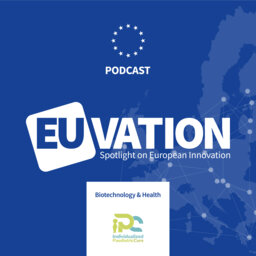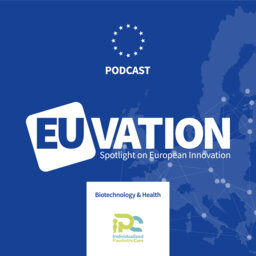Car2TERA (5) H2020 Project: Focus on the Demonstrators
Today we zero in on the circuits used in the demonstrators for the Car2TERA project. Herbert Zirath from Chalmers University of Technology talks about some of the challenges involved and how his team has dealt with them.
This is a Technikon podcast.
Think for a moment -about the car of the future. As you have probably guessed, it's quite smart. Meaning, your car can make driving decisions for itself. It can react to input with lightning speed and, all the while providing new levels of safety and efficiency. So it stands to reason that the car of the future must have a really fast communication backbone. Right? I'm Peter Balint from Technikon, welcome to today's episode. In previous podcasts, it's been said that the car of the future resembles a data communications center on wheels. The Car2TERA Project is helping to develop this concept by exploring how to effectively use sub terahertz frequencies to transfer critical data in the fastest, most reliable way. In Car2TERA, the project partners are bringing their research to life by constructing and demonstrating a prototype of an in-cabin passenger monitoring system and a short range, high data rate terahertz over plastic wired links. In Car2TERA, you would find partners from Austria, Sweden, Poland, Italy and Spain. And today we speak with Herbert Zirath, from Chalmers University of Technology in Sweden. His team is focusing on designing and building the circuits to be used in the demonstrators in Car2TERA . Welcome Herbert, and thanks for coming on today.
Yeah, thank you for inviting me.
Give us a quick overview of Car2TERA from your perspective.
Yes, the Car2TERA project is about applications in the terahertz frequency range. So, in this project, we have chosen two different demonstrators. One is a radar sensor for in-cabin monitoring of people, for safety and security, and the other demonstrator is a high data rate communication system for high data rate communication over plastic fibre instead of copper cable, or we communicate over optical fibre. But in this case, it's terahertz waves that goes over plastic fibre... at very high data rate. So these are two demonstrators we will build at the end, OK?
And the project deals with sub terahertz frequencies, which means you need sort of a different approach and this is perhaps where using optical fibre doesn't really perform well anymore. You have to get something that can deal with the much, much higher frequencies that are required in order to carry out these superfast communications. Is that pretty much correct?
Yeah. Well, optical fibre are communicating at a much higher frequency. So and it's not really a radio frequency technology anymore. So we we are at frequencies above 100 gigahertz, say, up to 3 or 400 gigahertz so that that's a frequency range we want to cover.
And then if we focus on your particular efforts, we'd see that a part of this project, as you said, is to build two demonstrators and your job along with your team at Chalmers is to design the circuitry for this. And can you tell us a little bit about what you're doing there?
Yes, we designed various circuits for the demonstrators, such as amplifiers. So, and that circuit is amplifying small signals so so they can be demodulated. And so one can recover the data. And there are also other functions we perform, like changing frequency... so frequency translation. So we can, for instance, we can change frequency from 150 gigahertz to 10 gigahertz... for instance, the circuits, are called mixers. And then there are also on the circuits we are exploring like frequency multipliers and frequency multipliers simply multiply the frequency with the factor two, three or four, etc. And then we put these circuits together in a multifunction circuit to form a transmitter and a receiver, which is the basis of actually both demonstrators. And so both both in the radar sensor, we send out the signal with which we we have formed in our circuits and then we get the reflected way back from an antenna and then we receive that signal and translate it to a lower frequency, lower frequency where we can demodulate it. It's similar with the high data rate communication over plastic fibre so circuits can be reused actually.
And for those people that maybe don't understand, for every electronic component that comes to market, there has to be quite a bit of research and design in the area of the circuitry, and the circuitry is basically like a roadmap for the electrons that are traveling to do their job. So what you're doing, a lot of it is sort of at the drawing board and then to practicality where you build these demonstrators.
Exactly. In practical life, we simulate the performance in circuit simulators to see that we get the type of specification we want and then we make to what is called art work, that this is the circuit layout, which is the data the semiconductor factory needs for processing the circuits and after it's processed ...in this case, it's Infineon who make the processing of the circuits one of the partners in in this project. We also measure the circuits, and in case we are far off from the simulation, we try to understand why. So it's quite a... one can say repetitive work, we we have done a number of these various processing rounds now.
And of course, with these demonstrators, you have to build them and then you have to test them. And when we talked previously, you mentioned that the testing could sort of be a challenge in this particular case and tell us why that is.
It's yeah... due to different reasons. One reason is that the equipment, the measurement equipment, they are not so well-developed at these high frequencies. So we need to get around that somehow. In some cases, we even have the problems with equipment that break during the time. But it's not only equipment problem, but it's also the problem to get the signals in and out to the chip. I mean, the chip is a small piece of silicon. It's the number of square millimeter, say, three four square millimeter of a silicon wafer. These signals have to get into the chip and to get out to the chip at very high frequencies. And this is also a challenge because typically what you do with the electronic is that you package a number of circuits on a circuit board. But this is very complicated at at these high frequencies due to parasitic components. So we have to get around that problem. This can be done in various ways. One is to develop the package and that is also what we do in the project, but it takes a much longer time. But it's possible also to use what is called coplanar waveguide probes . So it's it's a probe that you contact the circuit with and then then you can apply the signals and you can take out the signals in the lab bench environment and do the testing you want. So, so we do both in this project. This probe testing is done to get a fast result; if the circuits are working or not, but then in the demonstrators, we need to have the circuit packaged so that that's one of the activities in the project. Also to to put put the circuit in the package so we can put it on a circuit board.
And it sounds like maybe a lot of these challenges that you experience are because you're just working in these super high frequencies that haven't really been rolled out on a large scale. It's still sort of new.
Yeah, that's true. I mean, from basic research several groups are working in this frequency range. But now we're talking about making demonstrators that can be scaled up in high production and even make it to a consumer product. That's a different... totally different story then it cannot be expensive packaging, for instance, so we need to find a low cost package for this. That's also an activity in the project and Infineon is developing these types of packages. We work together with them. So it covers really a lot of activities. This project, it's not only about the design of the circuits, it's much more than that.
Sure. And so with the work that you're doing on Car2TERA, I wonder what kind of effect did the pandemic have on your team?
Yeah, of course it has affected us somewhat. We have had all meetings as video conferences, and I think many people have learned how to use these various programs now. So I think that this has worked very well. But then we are somewhat restricted to be on campus also. So the access to to the labs, for instance, has been somewhat restricted. So it has had some limitations. But I think we are pretty much on on the target. I mean, where we are delayed a bit, but I think we can manage that.
Do you think when the COVID pandemic is gone do you think we could sort of cope with less travel than we have in the past?
Yes, absolutely. I think many people will save a lot of time because travelling usually takes two days. Of course, you would need to have some meetings face to face, but I think a lot of meetings will be over video conference and the tools are getting better and better. So. So I think we will see more more of this in the future.
Yeah, this is a good point and kind of a tragic way to learn how we could be more efficient. But in the end, I'm hearing this from a lot of different individuals that, you know, we're uncovering new ways to work, and this is probably a good thing.
Yes. I think another thing is that, uh, people will work more from home also to a larger extent, maybe a few days per week, if that's possible. I mean, everyone cannot do it, but the people normally working at the offices can possibly do that. And I think also companies will save office space due to this.
For sure yeah, without a doubt. I'm curious also from your side, what other challenges did you encounter what unexpected roadblocks that you run into?
Not that many, really, I mean, COVID, we have covered, and I think I mentioned also that we had some instrument that broke. So, but apart from that, I think it has worked pretty smooth and we have regular contact with the partners, both all together, but also between individual partners to resolve problems we see on the way. So I think it has been rather smooth during the project.
OK, now I want to turn to a news item and this kind of made me think of the Car2TERA project in a way; we're hearing about companies like Volvo, for example, who recently announced that they will halt their production line. And it's not because of waning customer demand, but because of chip shortages. And there should be an effort to make the EU more independent when it comes to supplying microchips. And I'm wondering what kind of inroads is Car2TERA making in this effort?
Car2TERA is really based on semiconductor technology, both on the antenna side and the part where KTH is doing their effort in micro machining and micro electromechanical systems. So one can say that that's a part of semiconductor industry as well or research and then definitely Infineon processes are really in the leading edge in its area. That is for very high frequencies so that there are many other semiconductor companies in Europe as well, like SD Microelectronics, Infineon and XP to mention a few. I think it has become apparent now that that we have to use European suppliers more more than before. I think some of the processes are very difficult to build up in Europe, like the few nanometer CMOS processes and because those factories are extremely challenging and extremely expensive as well. Of course, now now it's a shortage, but we don't know. After two years, if if there would be a shortage anymore and if Europe then pay for these very expensive factories, there would be overproduction maybe. So that I think that that that could be a problem, really. If we believe in Europe, that we very easily can can build the same factory as TSMC, for instance, or Intel. I mean, they have developed the technology for many, many years, and it's not so easy to to copy it. But we have other processes which are very important, like the high frequency silicon germanium and CMOS. We have also CMOS in Europe and we have power electronics so that there are some semiconductor areas where we are very competitive and I think it's very important to to keep that. And then I think I haven't really seen any real data on on exactly what circuits are in shortage. But I think it's it's about graphical processors which is used for the cryptomarket... cryptomining. So, it's it's a little bit uncertain, really, for me, at least, the specific circuits which are lacking. Nobody says really what it is.
OK, it's interesting.
Yeah, I think so. I think journalists should do better work there and try to find out, OK, what really what circuits are we're talking about? We can just guess I think it's GPUs and DRAMS but maybe micro processors or microcontrollers.
Mm-Hmm. Yeah, it sounds like this maybe is not such a easy problem to solve, but something that will require a lot of attention over the next few years to see which way things go.
Absolutely. It's very critical for the car industry now, for instance.
Now, if you look forward a little bit, can you predict or say which new technologies could come out of this car to terror project?
Yeah. I mean, the baseline is the SiGe semiconductor process, and we are designing in the new process called B12, which is a top notch silicon germanium process that can cover frequencies up to maybe 500 gigahertz or so, that will definitely if we can make demonstrators, that could be a consumer product. This would be very good for those processes then what KTH is doing. That's the micro machine silicon and micro electro mechanical systems, which is also based on silicon. That could also be scaled up in production, and one can integrate that in fabrication process in the future. We'd say silicon germanium semiconductor process. So this is also something one can look at in the future -how to integrate the active electronics with with the passive ones. And that's really something which is new today for these applications. Besides, we were also working with graphene electronics, which is even more challenging. What we try to do there is to make frequency converters. And if that's working, this could also be a technology that might come to mass production. But there are many challenges left in in this area.
This sounds great. The hope really of any H2020 project is to develop future technologies. And to me, it sounds like in Car2TERA there are many promising opportunities. Thanks for the updates on the project, and your work is definitely augmenting Europe's existing success story on advanced smart electronic sensor systems. So thanks.
Yes, it has been a pleasure to be here.
For more information about the Car2TERA Project, go to car2tera.eu. The Car2TERA project has received funding from the European Union's Horizon 2020 Research and Innovation Programme under grant agreement Number 824962
 EUVATION: Spotlight on European Innovation
EUVATION: Spotlight on European Innovation


